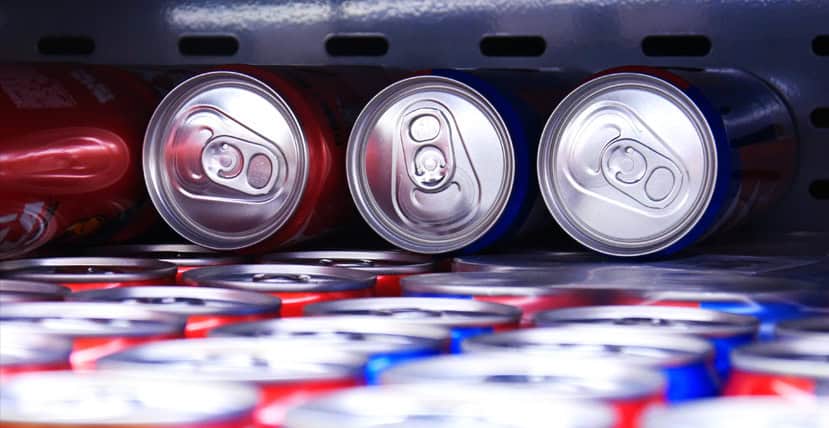Every month, Erise’s patent attorneys review the latest inter partes review cases and news to bring you the stories that you should know about:
Design Patent Obviousness Test Thrown Out
The U.S. Court of Appeals for the Federal Circuit, sitting en banc, recently overruled the Rosen-Durling test for design patent obviousness, which had stood for four decades. While the Court’s opinion leaves many questions unanswered, this decision is bound to have significant ramifications for inter partes review (IPR) challenges to design patent validity. The Court replaced the Rosen-Durling test with a more flexible framework for evaluating obviousness based on the existing KSR framework used to evaluate the obviousness of utility patents. We expect this new framework to favor defendants and we anticipate an increase in IPR petitions challenging design patents. However, it is the Patent Trial and Appeal Board (PTAB) who will be the first to put the new framework into practice by answering the questions left by the Federal Circuit.
The Federal Circuit decision stems from LKQ Corporation’s IPR on a General Motors patent for a front fender design. After the PTAB found that LKQ had failed to establish any of the challenged claims were obvious under the Rosen-Durling test, LKQ appealed to the Federal Circuit, which affirmed the Board’s decision. LKQ then requested rehearing en banc, asking the Court to consider overruling the Rosen-Durling two-step test that required first identifying a primary reference that is “basically the same” as the challenged design, and second, identifying a secondary reference that is “so related” to the primary reference that the appearance of the features of the secondary reference would have suggested applying those features to the primary reference.
After granting LKQ’s request for rehearing, the 10-judge panel agreed with LKQ, found the Rosen-Durling test to be too rigid and inflexible and inconsistent with Supreme Court precedent, including KSR, and accordingly overruled the test. In place of Rosen-Durling, the court held that the existing framework for evaluating the obviousness of utility patents based on KSR and Graham would now also govern design patent obviousness.
One major takeaway from the Court’s decision is that establishing the obviousness of design patents should now be easier for defendants and IPR petitioners. Not only did the Court expand the pool of potential prior art that may be used to establish a design’s obviousness, but the Court also opened the door to single-reference and multi-reference obviousness grounds and eased the showing that must be made for why the prior art designs would have been combined.
But the Court’s decision also left unanswered a number of questions about how, or even if, certain aspects of the KSR obviousness framework will apply to design patents. Among other things, the Court declined to provide the full test for determining whether a prior art design was “analogous art” usable in an obviousness combination and questioned whether some of the existing factors considered as part of the motivation to combine analysis and certain secondary considerations of non-obviousness would apply in the design patent context.
But in the Court’s view, some uncertainty is to be expected: “As with any change, there may be some degree of uncertainty for at least a brief period, but our elimination of the rigid Rosen-Durling test is compelled by both the statute and Supreme Court precedent.” But some uncertainty does not mean the new framework will be impractical. As the Court noted, “this test has proven workable for utility patents and we see no reason why it would not be similarly workable for design patents.”
Federal Circuit: PTAB Erred in Applying Printed Matter Doctrine
Appellant IOEngine won a partial appeal from the Federal Circuit in May after the court found the PTAB improperly applied the printed matter doctrine in finding some claims of IOEngine’s claims on two patents unpatentable.
The two challenged patents claim a “portable device” configured to communicate with a terminal. The claims recite a memory, on either the portable device or terminal, that stores first program code which, when executed, presents an interactive user interface. Also stored in memory are second, third, and fourth program code that are configured in various ways to facilitate communications, including with a communications network node.
As Dennis Crouch writes on PatentlyO: “The printed matter doctrine is a unique and somewhat amorphous concept in patent law that straddles the line between patent eligibility under 35 U.S.C. § 101 and the novelty and non-obviousness requirements of §§ 102 and 103. On the eligibility side, the doctrine serves as a screening tool to exclude claims that are directed solely to the content of information from patent protection.”
In its appeal, IOEngine successfully argued that “encrypted communications” and “program code” do not constitute printed matter. “(P)rinted matter is matter that is claimed for its communicative content—i.e., the content specifically being communicated. The fact that there is a communication itself is not content; content is what the communication actually says. … That the code is being downloaded does not change the analysis. Because there is no particular content being claimed, the program code is not printed matter,” reads the Federal Circuit decision.
“Because “encrypted communications” and “program code” are not being claimed here for the content they communicate, they are not printed matter. The inquiry stops there; if the claim element is not printed matter, we need not consider whether it has a functional or structural relation to its substrate.”
Other recent IPR headlines:


